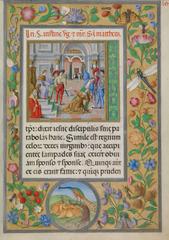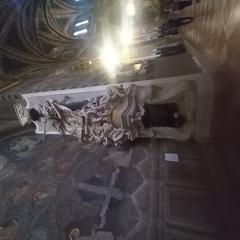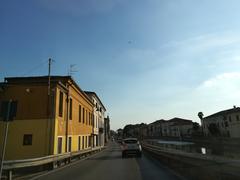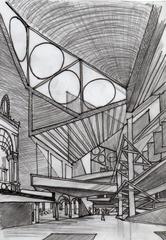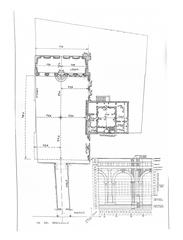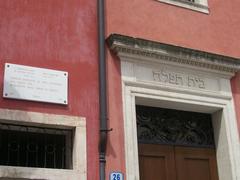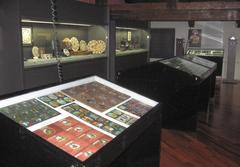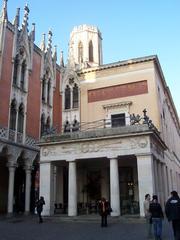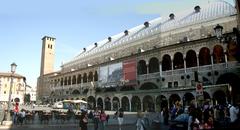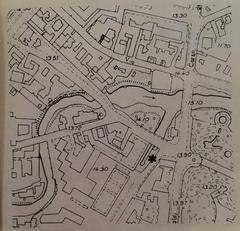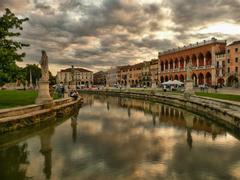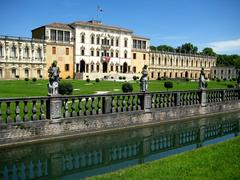
Villa Giusti Visiting Hours, Tickets, and Travel Guide: Exploring Padua’s Historic Armistice Site
Date: 04/07/2025
Introduction: Villa Giusti’s Historical and Cultural Significance
Villa Giusti, situated just beyond the heart of Padua, is a landmark of European history and Italian cultural heritage. Most renowned as the site of the Armistice of Villa Giusti—signed on November 3, 1918, ending World War I on the Italian Front—the villa stands as a symbol of peace and the dramatic transformation of Central Europe. Originally a rural estate, Villa Giusti evolved into a noble residence under the Giusti family, notable figures in Padua’s social and political scene. Today, the villa is preserved as a living museum, maintaining its neoclassical elegance, original interiors, and extensive gardens. It offers a unique window into Italy’s journey to national unity and the broader consequences of World War I.
This comprehensive guide covers Villa Giusti’s visiting hours, ticketing procedures, accessibility, guided tours, and tips for nearby attractions, ensuring visitors get the most from their journey to this iconic site. For the latest details, consult Padua Tourism Office and University of Padua’s history resources.
Table of Contents
- Introduction
- Origins and Historical Context
- Architectural Evolution
- The Armistice of Villa Giusti: A Defining Moment
- Architectural Features and Artistic Elements
- Visitor Information: Hours, Tickets, Tours, Accessibility
- Travel Tips and Nearby Attractions
- Integration with Padua’s Historical Landscape
- Frequently Asked Questions
- Conclusion and Summary
- References
Origins and Historical Context
Villa Giusti’s legacy began in the 19th century, transforming from a rural farmhouse into an elegant noble villa. The Giusti family, prominent landowners from Verona, played a significant role in Padua’s civic and economic life. Their estate became a focal point for both agricultural management and high society gatherings.
The villa’s international significance was cemented on November 3, 1918, when Italian and Austro-Hungarian delegations convened here to sign the Armistice of Villa Giusti. This event not only ended the fighting on the Italian Front but also contributed to the collapse of the Austro-Hungarian Empire and the reshaping of Europe’s borders (University of Padua).
Architectural Evolution
Original Design and Restoration
Villa Giusti’s architecture combines neoclassical symmetry with Venetian villa traditions. Its central block, flanked by service wings, is set within formal gardens. Large arched windows, a columned portico, and a pale stucco exterior reflect the influence of Palladian and neoclassical styles (The Archspace). The piano nobile, or main floor, is elevated, and broad staircases add to its dignified presence.
The villa’s restoration in the 19th century modernized interiors and added decorative flourishes, while preserving the estate’s agricultural roots. The gardens, designed in the formal style with geometric parterres and tree-lined avenues, offer both beauty and tranquility.
Historical Layers
Villa Giusti was originally part of the Capodilista family’s holdings and later restored by Count Vettor Giusti del Giardino, a notable local figure. The building’s evolution is evident in its blend of rural practicality and aristocratic refinement (PadovaOggi).
The Armistice of Villa Giusti: A Defining Moment
As World War I drew to a close, the Italian military launched a decisive offensive in autumn 1918. With the Austro-Hungarian Empire collapsing, Villa Giusti was chosen as the neutral, strategic site for armistice negotiations. On November 3, 1918, Italian General Pietro Badoglio and Austro-Hungarian General Viktor Weber von Webenau signed the armistice in the villa’s grand salon, ending hostilities on the Italian Front (Europe Between East and West).
The armistice’s terms included troop withdrawals, military surrenders, and the dissolution of imperial authority in disputed regions. The agreement paved the way for new national boundaries and is commemorated annually in Italy as National Unity and Armed Forces Day.
Architectural Features and Artistic Elements
Exterior and Gardens
The villa’s harmonious façade features pilasters, cornices, and a portico, all constructed from local stone and finished in pale stucco. Formal gardens with fountains, parterres, and historic plantings give the estate its serene character. The grounds, designed by Count Gerolamo Giusti del Giardino, reflect 19th-century tastes and ambitions.
Interior Spaces
Inside, visitors find a central hall with high ceilings, period chandeliers, and stucco or frescoed walls. The historic Armistice Room is preserved with original furnishings and maps, offering a poignant glimpse into the events of 1918. Additional rooms—including studies, libraries, and dining halls—showcase the Giusti family’s lifestyle and the villa’s diplomatic role (PadovaOggi).
Visitor Information: Hours, Tickets, Tours, Accessibility
Visiting Hours
Villa Giusti does not maintain regular daily visiting hours. Instead, visits are by appointment only and must be booked in advance. Typical visiting times for guided tours or special events are between 10:00 AM and 5:00 PM, Tuesday through Sunday. Always check the official website or contact the villa directly for the latest schedule.
Tickets and Booking
- Admission: Currently, entry is free, but advance booking is mandatory due to limited public access and preservation requirements.
- How to Book: Call +39 049 8758991 (Monday–Thursday, 9 a.m.–6 p.m.) or email [email protected].
- Guided Tours: Highly recommended for in-depth historical and architectural context. Tours are typically available in Italian and English; confirm language when booking.
Accessibility
Villa Giusti strives to accommodate visitors with mobility challenges, offering wheelchair access to primary areas and gardens. Some historic rooms may have limited accessibility—discuss any specific needs when booking.
Facilities
On-site amenities include restrooms and parking. A small gift shop offers books and souvenirs about Villa Giusti and Padua’s history.
Travel Tips and Nearby Attractions
- Getting There: The villa is located in Mandria, just 5km from Padua, and is reachable by car, public transport, or taxi.
- Duration: Plan for 1–2 hours to explore the villa and grounds.
- Photography: Permitted in the gardens and exterior; restrictions apply inside and especially in the Armistice Room.
- Nearby Attractions: Scrovegni Chapel (Giotto’s frescoes), Basilica of Saint Anthony, Prato della Valle, and the University of Padua are all within easy reach (Explorial; The Travel Author).
Integration with Padua’s Historical Landscape
Villa Giusti enhances Padua’s tapestry of medieval, Renaissance, and modern sites. Its gardens echo the city’s tradition of green spaces, such as the Orto Botanico di Padova. The villa’s preservation and commemorative role make it an essential stop on any historical tour of the region (University of Padua).
Frequently Asked Questions (FAQ)
Q: What are Villa Giusti’s visiting hours?
A: Visits are by appointment only, typically offered Tuesday to Sunday, 10:00 AM–5:00 PM, during special tours or events.
Q: Is admission free?
A: Yes, but you must book in advance.
Q: Are guided tours available in English?
A: Yes, though advance confirmation is recommended.
Q: Is Villa Giusti wheelchair accessible?
A: Most primary areas and gardens are accessible; some historic rooms may have limitations.
Q: Can I take photos inside?
A: Photography is permitted in gardens and exteriors; restrictions apply inside, especially in the Armistice Room.
Q: What other sites should I visit nearby?
A: Scrovegni Chapel, Basilica of Saint Anthony, Prato della Valle, and University of Padua.
Conclusion and Summary
Villa Giusti is a remarkable testament to both Italy’s architectural heritage and a pivotal episode in European history. Its serene gardens, preserved interiors, and the evocative Armistice Room provide an immersive experience for visitors. Advance booking is essential due to limited public hours and the villa’s ongoing preservation. Combining a visit here with Padua’s other renowned sites offers a deep dive into the region’s layered past.
For updates on visiting hours, tickets, and seasonal events, check the official Villa Giusti website and the Padua Tourism Office. Use the Audiala app for guided tours, travel tips, and notifications about special events, and follow us on social media for further insights into Italy’s rich cultural destinations.
References and Official Links
- Padua Tourism Office
- University of Padua – History Resources
- Europe Between East and West: The Armistice of Villa Giusti
- PadovaOggi – Villa Giusti Event Article
- Explorial: Hidden Gems of Padua
- The Travel Author: Complete Guide to Padua
- The Archspace: Palladian Architecture
- Villa Giusti Official Website


